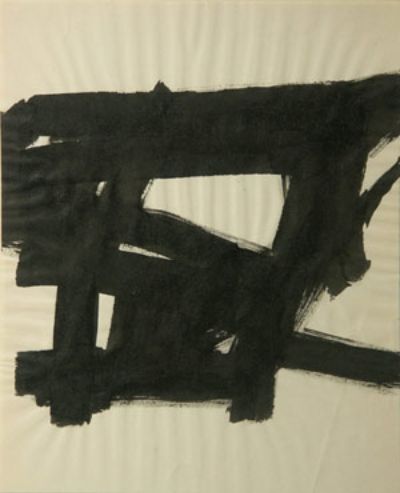Nearly half a century after his death, Franz Kline still passes as an abstract painter. His breakthrough was a rejection of the worn-out world of surface representations. Beneath surfaces, he found good bones that he articulated as slashing diagonals, made either in black house paint loaded onto a broad brush and applied with the whole arm or condensed into smaller spaces in ink on paper.
In a 2002 review, Holland Cotter described Kline’s “fascination with radical forms of East Asian calligraphy,” citing a drawing from 1955 that “has the explosive look of Zen thrown-ink painting.”
Kline was no Zen priest, however. His achievement is the appearance of spontaneity without the fact of it.
The recent photographs of N. P. Thompson offer evidence of what many have suspected, that instead of being purely abstract, Kline was painting the urban scene, specifically the scaffolding of tall buildings under construction.
Here’s a Thompson photo, titled Intricacies.
And here’s Kline’s small ink-on-paper, Untitled (Study for Wanamaker Block) from 1955, image from Stephen Foster Fine Arts.




Behave Regina.
Are you familiar with the logical Fallacy, “Ipso facto ergo sum.”
The photos don’t really have anything to do with one another. It’s quite possible that Kline has given the photog the impetus to focus on structural fragments and not the other way around.
JVK
You could be right, JVK. The words are a suggestion of glue to hold the suggestion of scaffolding together. Other connections are possible or none at all.